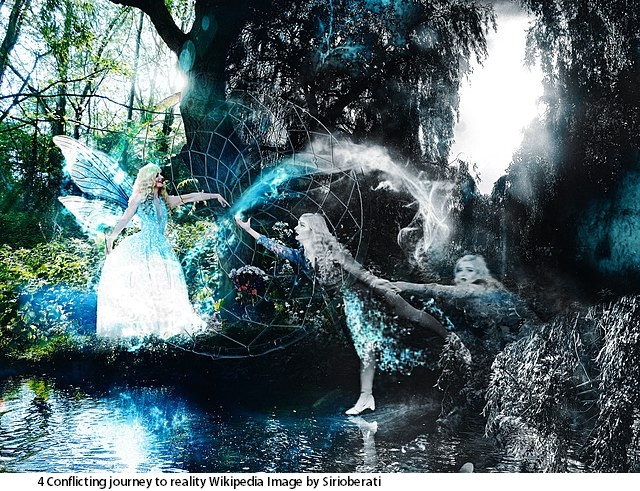Post 50 –by Gautam Shah
(Lecture series: Space Perception -Article-V of 15)
.

Objects are sensed as physical things, hyper real recollections and mix of both. Collection of objects random or arranged, reflect relationships at many different levels. The basic relationship that we perceive is the degree of nearness or farness in time and space. These also define the forward-backward in spatial terms, and previous-later positions in time, of the objects. Other relationships that we perceive about objects include diversity and commonality, continuity and separation, complete figures and partly occluded articles, static and dynamic forms.

The perception of objects occurs through all senses. Some senses, like vision and audio are capable of measuring objects and their distances. But sense of smell, taste or touch are only fuzzily indicative of location and direction, and so do not offer the spatial totality.


Objects appear as recollections, but without any sequence or time reference. Objects appear as flitting images, without any clue of their relevance or origins. Such recollections seem to be individual ‘frames or shots’ of happenings, but without any distinctive links to the greater whole. The images do not have any concern with the past, present or future but are altered compositions, which perhaps our subconscious expects or desires. The recollections represent intense sensual experiences, but need definitive context, otherwise these can remain sporadic and unrelated incidences.

The spatial and temporal contexts are the most important aspect of perceiving objects. Spatial context provides a ground for comparison of ‘scenes’. The comparison occurs in terms of size, scale, direction or orientation and nature of exposure to the ‘scene’ (forward, backward, partly occluded). Spatial context emerges from three references, the position of the perceiver, the adjacent objects and environmental effects. The temporal context relates to sequence of happening, duration, rate of change and chances occurrence.


The spatial and temporal contexts are relevant mainly due to environmental effects. The effects are spatially directional and variable in time. And both of these factors continually create new compositions of objects. Environmental effects mould the experiences. Objects seem closer or far from each other. We tend to see complete figures or forms from sparing details, if we had past encounter with such objects. Similarly we build hyper real bridges of relations or connections between objects that are far distanced from each other, and often out of the scope of perception.

Objects are marked by conditions that indicate direction. The direction indicators are experienced on objects that are long, short, sharp-edged or rounded, affected on few faces by the environment, and with graphics. The direction indicators in static objects represent potential for movement. Objects that have sequencing motifs such as forms that have overbearing pointers, retreating or advancing repeats, fading or intensifying clarity, varying environmental effects also state directions, and so movements.

Directions and movements in groups of objects are perceived, when the real, hyper-real and remembrances, all have the same reference frame or datum. Here the reference frame is evident through the features remaining strong and consistent. Environmental effects are directional and so suggest the change when the real and remembered perceptions merge.

Our perception of objects is always unequal. The unequal experiences help in exacting or blurring a location. The former (exacting a location) is due to the duality of the sensorial nodes like ears and eyes and the later (blurring) is due to synchronicity of two nodes like smell and taste or the widely placed multiple (like pain, temperature, moisture, etc.) tactile experiences over the entire body surface. The unequal perception is due to age, natural proficiencies and experience building exposures.

One of the remarkable proficiency, natural or gained is about multitasking. Multitasking or multi attendance involves capacity to perceive many things concurrently, using the same or different sensorial nodes. Multitasking also may mean using various body limbs simultaneously.

.
One thought on “PERCEIVING set of OBJECTS”